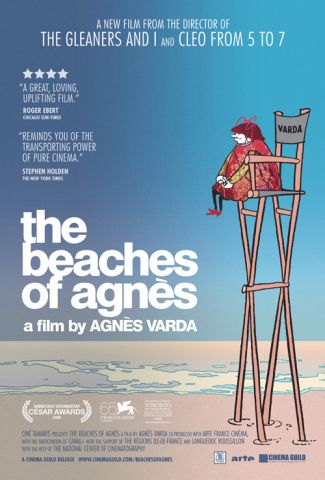 Watching this documentary is perhaps the closest thing possible to getting inside long-time French filmmaker Agnes Varda’s head without surgery. It’s a playful brain dump that skips through the memories of her long life in an avalanche of arty free association. “She has a way of never explaining very much,” wrote film critic Roger Ebert, “and yet somehow making it all clear.”
Watching this documentary is perhaps the closest thing possible to getting inside long-time French filmmaker Agnes Varda’s head without surgery. It’s a playful brain dump that skips through the memories of her long life in an avalanche of arty free association. “She has a way of never explaining very much,” wrote film critic Roger Ebert, “and yet somehow making it all clear.”
Synopsis: Agnes Varda, who at this time of this film was 80 years old, finds a way to tell her story that is as original and vivid as her own life. Constructed from family photos, snippets from her many films, and swept along by her irrepressible narrative, the bits of her story appear and vanish like bubbles in the sand. Old photos come to life in carefully reconstructions with young actresses, whom she sits beside, observing with a wry smile. The river of time flows deep through Varda’s live, pulling you along with it on a wild ride that encompasses many of the most significant events of the 20th Century.
Story structure: The film opens on the beach, where Varda is building a very artsy mirror assemblage, an apt visual metaphor for the film to come, in which Varda throws the pieces of her life into the kaleidascope of this film. After the loosely follows the path of her, chronicling major events such as her marriage to French filmmaker Jacques Demy. But equally resonant is the interior journey of the recollection itself, the inquiry leading her to surprising places in her mind, and like a tour guide, leading us, is Varda, sitting in a little sailboat, or walking shoeless on the beach. The story is told with her narration, in a train-of-consciousness style that allows her to wander freely to find connections that are real to her, and captivating to us.
Cinematography: The memorable scenes for me are the way still photographs were incorporated into the film. Varda, who was an accomplished photographer, uses pictures from her childhood layered with moving images to form moving, occasionally surreal and always stimulating visual juxtapositions. The opening mirror scene is also a keeper. The timelapse of suger cane cutters in Cuba is also memorable.
Editing: The stream of consciousness style of this film reminds me a little of “Fast, Cheap and Out of Control.” Only within one person’s head, not four.
Music and sound: The sound effects in the mural painting scene, such as pig snorting, registered.